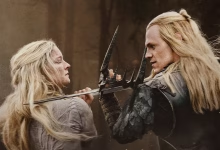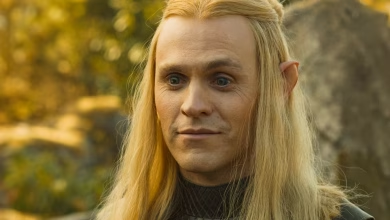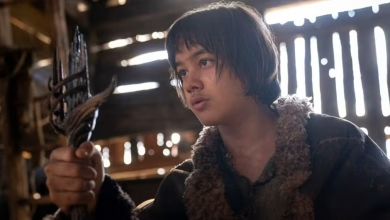Why The Rings of Power is Focusing on the Wrong Era
There’s one era in The Lord of the Rings’ history that would have suited The Rings of Power’s narrative much better than Sauron’s rise.
As the latest on-screen adaptation of J. R. R. Tolkien’s work, The Rings of Power has brought new life to The Lord of the Rings’ universe. Tolkien’s books have served for decades as the fundamental firmament that the fantasy genre has relied on. Tolkien’s versions of orcs, elves, dwarves, and hobbits are now cornerstones in the genre, and few works fail to introduce at least some of the creative inventions that Tolkien brought to life. Peter Jackson’s The Lord of the Rings trilogy launched a modern revival that brought Tolkien’s work back into focus once again.
The Rings of Power has been working to build on the twin legacies of Tolkien and Jackson, but there is one area where it fell short: Its focus. Rather than exploring a new and compelling direction through which to take its story, Prime Video’s hit show has simply elected to retread old grounds. The show may have become a financial success, but it isn’t quite the creative exploration it could have been. Instead, there was another direction that it really should have taken.
The Current Focus of The Rings of Power

Naturally, for a show with the title of The Lord of the Rings: The Rings of Power, the show would always revolve around the iconic Rings of Power. The Rings themselves are old objects of immense influence and importance. Every character with a ring enjoys impressive powers that can help wielders achieve anything they dream of. Their forging provides an opportunity for the show to unveil many secrets of Middle-earth, while also introducing characters that have never truly had the chance to appear on-screen before. It also makes each ring feel far more important than the movies ever did.
Another natural direction for the show was to follow Sauron’s rise to power. His role in the overall narrative of the original movies and Tolkien’s books has made Sauron a legendary villain. Sauron is the embodiment of evil, and the haunting specter of his eye-like tower is an image that has resounded through the ages. It would have been bizarre to center a Lord of the Rings TV show around any villain that was not Sauron. After all, he represents everything that Middle-earth stands against. He’s also the most iconic villain. Yet, leaving Sauron behind is exactly what should have happened.
The Rings of Power Should Never Have Been About Sauron’s Rise

Sauron and the Rings have been the focal point of every major on-screen The Lord of the Rings adaptation. Instead of constantly returning to the same overarching threat, the show could have broadened its horizons by choosing to do something new. The Hobbit took a chance by introducing a variety of threats, including the infamous Smaug. The Rings of Power, contrarily, elects to simply retread the ground that the original movies already walked through.
The show offers nothing particularly insightful about Sauron’s plans, nor can it possibly provide twists or turns that fundamentally change the overarching narrative. Every viewer will know the loss that Sauron will eventually suffer, and they know that he will return at some later time to face off against the Federation and their many allies. Sauron’s long and winding history has already been explored endlessly. By choosing to explore the same concept that has already been presented to an immense audience, the show instead makes itself a supplemental element, rather than an intrinsically worthwhile project.
Adaptations always run the risk of feeling unnecessary. While The Lord of the Rings: The Rings of Power has become a success for Prime Video, some elements make the show feel like it was never wholly needed. Through the legend of his name alone, Sauron presents from the beginning as the focal point of the series. He is the overarching link between The Lord of the Rings and The Rings of Power, and his presence is the thread that always hangs over characters and viewers alike. Because of that, Galadriel does not feel quite as central to the narrative, compared to his influence.
In a TV show, it is much more difficult to adequately depict a relatively one-note character for so many episodes. Sauron is a figure of darkness and even his light moments as Halbrand are poisoned after The Rings of Powers’ biggest twist. It’s hard to truly care about the character when he is so fundamentally evil — and when his evil has already been thoroughly explored. With so many years of content revolving around Sauron, he already feels too developed to need another piece of content focused on him. Yet the problem with The Rings of Power is not necessarily Sauron. The problem ties back to the Age that the show chose to adapt. The Rings of Power should never have adopted the Second Age.
A Better Era for The Rings of Power

If the franchise is ever going to grow beyond those basic concepts, it needs to do so by embracing other elements in the history of Middle-earth. There are Four Ages in the books and each deserves to be fully fleshed out on-screen. The Elder Days is
a period that rarely gets the attention that it very much deserves. The Second Age focuses on Sauron’s rise, which happens to be the same period that The Rings of Power explores. The Third is the time that Frodo and Sam are born into, and the Fourth is the Age of Men. The Elder Days should have been a focal point as the most compelling Age that hasn’t yet been explored,
Much like in the original movies, at the beginning of the First Age, there is already a preexisting threat. Morgoth, a powerful Valar, rules with brutality and fury. As the elves are just coming to power in Cuiviénen, Morgoth falls before the might of the other Valar. The civil war between the Valar alone is worth depicting on-screen, and it can provide some fairly needed nuance to a show. After all, the battle between light and darkness is compelling, but shows can struggle when there is limited depth to explore within villains. When the orcs are always villainous, it can be a struggle to care about them at all. A civil war between seemingly monstrous races can help change that perspective.
The First Age is also one filled with elements that do not necessarily carry on through the movies. That allows the show the chance to explore twists and turns that audiences would not expect. The First and Second Kinslayings, the fate of Gondolin, and Morgoth’s return are all stories that could easily fill shows of their own. Instead of retreading the ground of Sauron and reintroducing fairly familiar elements of Middle-earth, The Rings of Power could have featured a new villain with fresh motivations and a fascinating story. Sauron is undoubtedly a great villain, but seeing a world before Sauron’s rise would strengthen the on-screen world-building.
Depicting the Valar on-screen could have been a massive budgetary problem. The wide timespan of the Age also would have been an issue, given that it likely would have needed constant flashforwards and time skips. Additionally, explaining pre-existing conflicts would have been a nightmare that would require an endless amount of exposition, CGI, and actors. Settings were also larger-than-life, and it would likely never have worked in picturesque New Zealand, ruining the familiarity of an iconic Lord of the Rings location. It makes sense that The Rings of Power chose the Second Age, even if it is disappointing.



